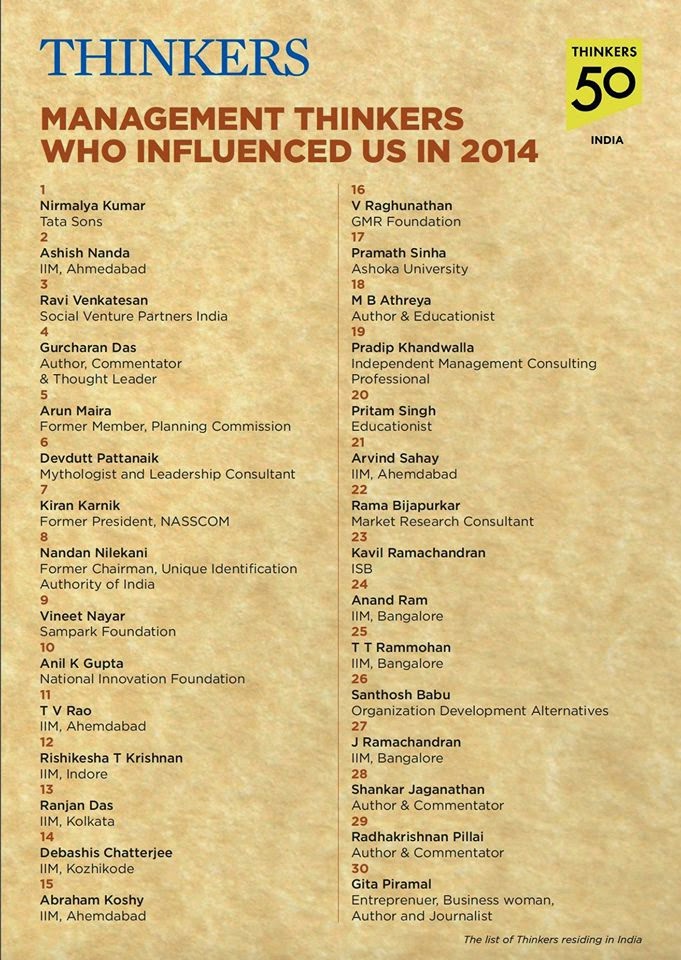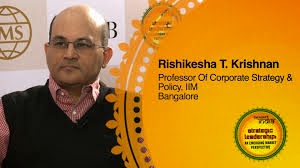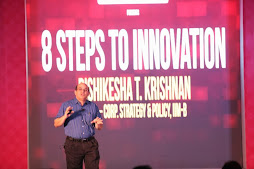Professional societies potentially play an important role in an innovation system. They not only help provide forums like conferences and journals for knowledge validation and sharing, they advance and sustain a field by supporting the training of new generations of scholars. And, from time to time, they can get involved in larger issues of public policy that are critical to the larger innovation ecosystem.
India has a number of professional societies. These include three science academies, the Indian National Academy of Engineering (INAE), and discipline-based bodies like the Indian Institute of Chemical Engineers (IICE). I have no idea what the total number of such professional societies is.
It’s been good to see these professional societies get more involved in issues that concern the nation as a whole. In recent years, the Science academies have been highlighting the need to improve the quality and quantity of science education in India. The INAE, as part of its Silver Jubilee, is organizing a special conference on “Towards a Better Innovation Ecosystem” later this year. The IICE had a session focusing on industrial innovation in its Chemcon 2011 conference at Bangalore last December.
But, from my experience, sustaining the core professional/academic agenda of these societies and advancing quality is not an easy task, at least in fields related to management. I have been involved with the Strategic Management Forum of India, a professional body related to the field of Strategic Management for several years, and we have struggled to enhance participation and quality.
It was therefore a pleasure and a useful learning experience to attend the 54th annual conference of the Academy of International Business (AIB) at Washington DC recently. The AIB, as its name suggests, is an association of scholars who work in the fields of international business and international management. The AIB has about 3,500 members. It was originally dominated by people from North America, but Asia is today the fastest growing region of the AIB.
A few things impressed me about the AIB conference:
• Though the conference had about 1000 participants, the average quality of papers was high.
• Participation of thought leaders in the International Business field was high, and they were all engaged in the conference. When our student Srivardhini presented her paper, the audience included John Cantwell (editor of JIBS, the best regarded journal in International Business), Yves Doz (Insead, a leading thinking on IB Strategy) and Ulf Andersson (Copenhagen Business School, another leading scholar in the field) among others. She got valuable feedback from some of these (and other) experienced scholars.
• With many of the editors of top IB journals present, participants got quick feedback on the publication potential of their papers.
• There were some excellent panels that gave a historical perspective of the field, and identified future directions for research. For example, in one of the panel sessions, one of the presenters (Myles Shaver, University of Minnesota) gave a very useful overview of the present status of “Entry Mode choice” research, one of the prominent sub-fields in the IB spectrum. This speaker gave a clear picture of which research tracks had very little potential because of diminishing returns as also which tracks might result in publishable research. Such advice would be invaluable to a young researcher in the field.
• In another panel held in memory of John Stopford (co-author of the legendary Managing the Multinational Enterprise), speakers such as Alan Rugman, Lou Wells and Julian Birkinshaw talked about critical issues such as balancing relevance, practical application and rigour in research. They discussed the importance of context in IB research. I found this panel gave an excellent historical perspective on research on MNEs, a perspective that would be difficult to gain otherwise.
• There were excellent sessions on IB curricula, new pedagogy, and how to use international field visits for effective IB education.
While other good conferences might have similar characteristics, the AIB conference seemed to be just the right size to have critical mass without becoming too unwieldy and fragmented, and seemed to have the right structure (mix of paper sessions, panels, commemoration events, and informal gatherings) that would be invaluable to doctoral students working in the field of IB. There is much we need to learn from these enduring professional societies about how to build professional societies in India.
India has a number of professional societies. These include three science academies, the Indian National Academy of Engineering (INAE), and discipline-based bodies like the Indian Institute of Chemical Engineers (IICE). I have no idea what the total number of such professional societies is.
It’s been good to see these professional societies get more involved in issues that concern the nation as a whole. In recent years, the Science academies have been highlighting the need to improve the quality and quantity of science education in India. The INAE, as part of its Silver Jubilee, is organizing a special conference on “Towards a Better Innovation Ecosystem” later this year. The IICE had a session focusing on industrial innovation in its Chemcon 2011 conference at Bangalore last December.
But, from my experience, sustaining the core professional/academic agenda of these societies and advancing quality is not an easy task, at least in fields related to management. I have been involved with the Strategic Management Forum of India, a professional body related to the field of Strategic Management for several years, and we have struggled to enhance participation and quality.
It was therefore a pleasure and a useful learning experience to attend the 54th annual conference of the Academy of International Business (AIB) at Washington DC recently. The AIB, as its name suggests, is an association of scholars who work in the fields of international business and international management. The AIB has about 3,500 members. It was originally dominated by people from North America, but Asia is today the fastest growing region of the AIB.
A few things impressed me about the AIB conference:
• Though the conference had about 1000 participants, the average quality of papers was high.
• Participation of thought leaders in the International Business field was high, and they were all engaged in the conference. When our student Srivardhini presented her paper, the audience included John Cantwell (editor of JIBS, the best regarded journal in International Business), Yves Doz (Insead, a leading thinking on IB Strategy) and Ulf Andersson (Copenhagen Business School, another leading scholar in the field) among others. She got valuable feedback from some of these (and other) experienced scholars.
• With many of the editors of top IB journals present, participants got quick feedback on the publication potential of their papers.
• There were some excellent panels that gave a historical perspective of the field, and identified future directions for research. For example, in one of the panel sessions, one of the presenters (Myles Shaver, University of Minnesota) gave a very useful overview of the present status of “Entry Mode choice” research, one of the prominent sub-fields in the IB spectrum. This speaker gave a clear picture of which research tracks had very little potential because of diminishing returns as also which tracks might result in publishable research. Such advice would be invaluable to a young researcher in the field.
• In another panel held in memory of John Stopford (co-author of the legendary Managing the Multinational Enterprise), speakers such as Alan Rugman, Lou Wells and Julian Birkinshaw talked about critical issues such as balancing relevance, practical application and rigour in research. They discussed the importance of context in IB research. I found this panel gave an excellent historical perspective on research on MNEs, a perspective that would be difficult to gain otherwise.
• There were excellent sessions on IB curricula, new pedagogy, and how to use international field visits for effective IB education.
While other good conferences might have similar characteristics, the AIB conference seemed to be just the right size to have critical mass without becoming too unwieldy and fragmented, and seemed to have the right structure (mix of paper sessions, panels, commemoration events, and informal gatherings) that would be invaluable to doctoral students working in the field of IB. There is much we need to learn from these enduring professional societies about how to build professional societies in India.















No comments:
Post a Comment